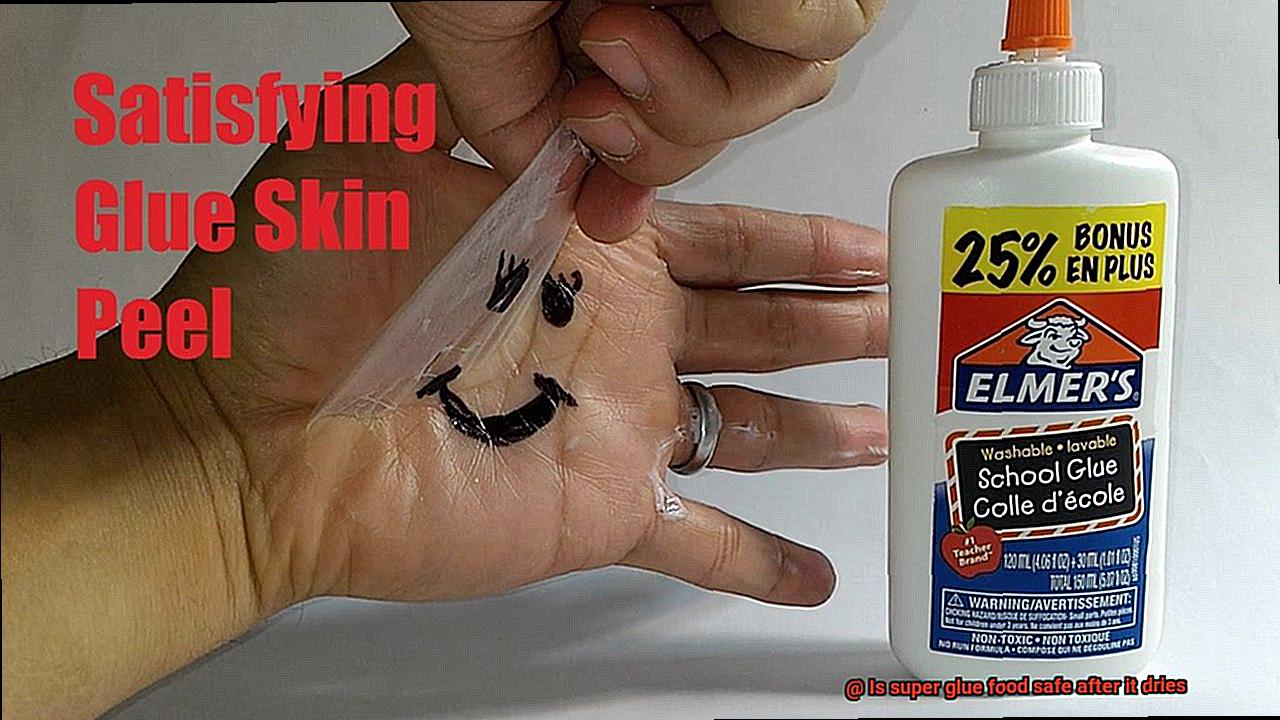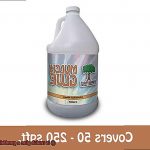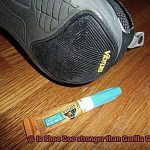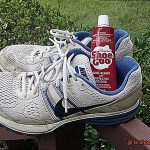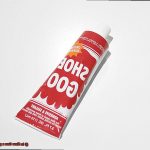Ever been caught in a sticky situation, desperately needing to mend a broken spatula or patch up a cracked plate? Enter super glue, the superhero of quick fixes. But lurking in the back of our minds is that nagging question: Is super glue food safe once it dries?
In this blog post, we’re diving headfirst into the captivating world of super glue and its compatibility with food after it’s set. Join us as we debunk myths, separate fact from fiction, and uncover any real risks associated with using this handy adhesive in your kitchen. So grab your detective hat and let’s embark on this exhilarating investigation together.
Dangers of Ingesting Super Glue
Contents
- 1 Dangers of Ingesting Super Glue
- 2 How Does Super Glue Work?
- 3 Is Super Glue Food Safe After it Dries?
- 4 Alternatives to Using Super Glue on Food-Related Items
- 5 Tips for Handling and Storing Super Glue
- 6 What Happens if Super Glue Comes into Contact with Food or Food-Contact Surfaces?
- 7 Specialized Adhesives for Use Around Food
- 8 Precautions to Take When Using Super Glue Near Food
- 9 Conclusion
Super glue, with its remarkable bonding capabilities and rapid-setting properties, has become a staple adhesive in various applications. However, when it comes to ingesting this powerful adhesive, caution must be exercised.
In this article, we will delve into the potential dangers of ingesting super glue, exploring the associated health risks while emphasizing the importance of prevention and seeking immediate medical attention.
The Hazards of Ingesting Super Glue:
Though super glue is generally safe for external use, ingesting it can have catastrophic consequences for one’s health.
When consumed, this adhesive can attach itself to the delicate tissues lining the mouth, throat, and esophagus, creating blockages or obstructions. These obstructions can swiftly escalate into breathing difficulties, choking, or even suffocation if the airway becomes perilously obstructed.
Additionally, the chemicals present in super glue can trigger painful irritation, inflammation, and burns within the digestive tract.
Recognizing Symptoms and Seeking Medical Attention:
Symptoms stemming from ingesting super glue may encompass distressing pain or discomfort in the throat or chest, hindrances in swallowing and breathing, coughing up blood, bouts of nausea and vomiting, as well as excruciating abdominal pain.
If you or someone you know ingests super glue, it is imperative to seek immediate medical attention. Swift medical intervention is paramount as it can help forestall further complications and minimize long-term damage.
Treatment and Prevention:
Within a medical setting, healthcare professionals may employ a range of techniques and procedures to remove ingested super glue and treat any accompanying injuries. Nonetheless, prevention remains the cornerstone in averting these dangers altogether. Thus, it is essential to store super glue out of reach of children and ensure proper storage practices to diminish the chances of accidental ingestion.
How Does Super Glue Work?
Look no further. In this article, we will unravel the mysteries behind this adhesive superhero’s incredible abilities. From its chemical composition to its impressive bonding properties, we will explore the science that makes super glue such a formidable companion for all your fixing needs.
The Chemistry of Super Glue:
At the heart of super glue lies a chemical compound called cyanoacrylate. Derived from ethyl cyanoacrylate, this liquid monomer is the key to its adhesive prowess. When exposed to moisture, such as water vapor in the air or on a surface, these cyanoacrylate molecules link together and rapidly polymerize. This process forms long chains that create a solid and durable bond.
The Adhesion Process:
When you apply super glue to a surface, it reacts with the moisture present. This triggers the polymerization process, causing the glue to solidify and form a strong bond. The best part? This reaction happens in just seconds, making super glue ideal for quick fixes and instant bonding emergencies.
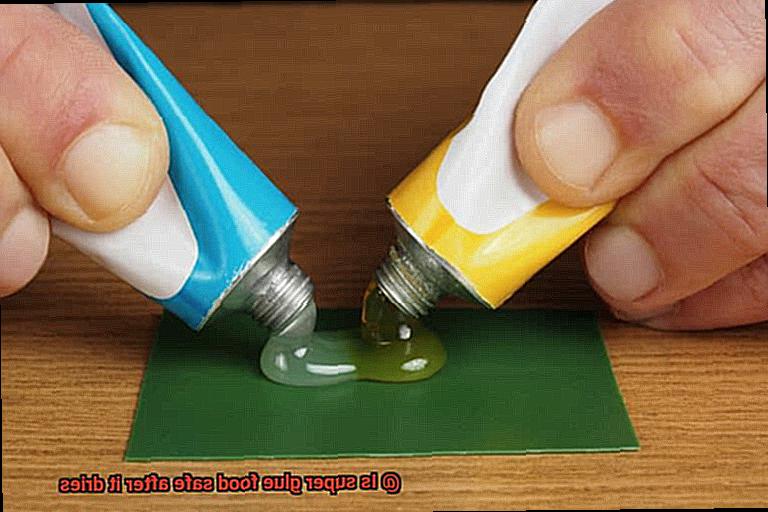
Clean and Dry for Optimal Results:
Before reaching for that trusty tube of super glue, it’s crucial to have clean and dry surfaces. Any contaminants or moisture can interfere with the bonding process and weaken its adhesive strength. So, make sure to thoroughly clean and dry the surfaces before applying super glue for optimal results.
Bonds that Transcend Materials:
Super glue isn’t picky when it comes to bonding materials. It forms excellent bonds with diverse materials like metal, plastic, rubber, ceramic, wood, and even some fabrics. This versatility makes it a popular choice for repairing broken jewelry or fixing household items.
Filling in Gaps:
Unlike other adhesives that require perfectly aligned surfaces for effective bonding, super glue has a trick up its sleeve. Thanks to its low viscosity, it can fill small gaps between materials, ensuring a strong bond even when the surfaces may not be perfectly aligned. Say goodbye to frustratingly misaligned pieces.
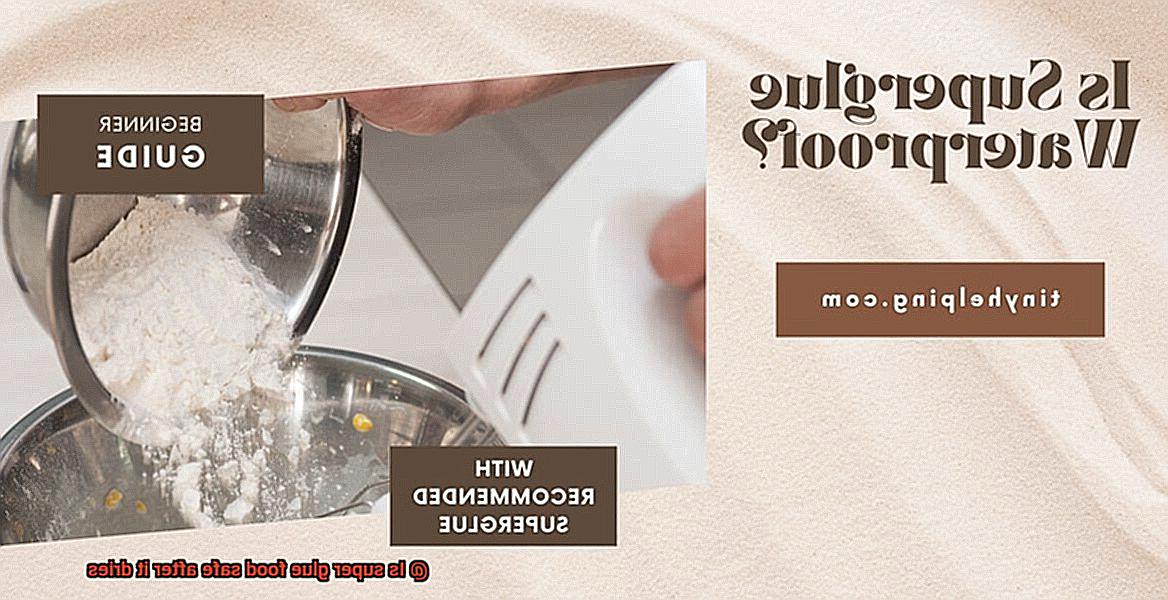
Is Super Glue Food Safe After it Dries?
When faced with a broken plate or a chipped mug, many of us turn to the trusty solution of super glue to fix the problem. But before we reach for that adhesive tube, it’s important to consider whether super glue is actually safe to use around food. After all, no one wants unwanted chemicals seeping into their meals.
Super glue, also known as cyanoacrylate adhesive, is primarily made up of cyanoacrylate monomers. These chemicals are not meant to be ingested and are not certified as food-safe by regulatory agencies like the FDA. However, there is good news – once super glue has fully dried and cured, it is generally considered safe.
The key here is to ensure that the glue does not come into direct contact with the food or any surfaces that may touch the food. To be extra cautious, you can use a barrier such as a food-grade coating or wrap to separate the glued surface from the food item.
In the event that you accidentally ingest a small amount of fully cured super glue, there is no need to panic. In small quantities, super glue is typically non-toxic and should pass harmlessly through your digestive system. However, if you happen to swallow a significant amount or experience any adverse symptoms, it’s important to seek immediate medical attention.
To play it safe, always follow the manufacturer’s instructions and warnings when using super glue around food. Prevention is better than cure, so take precautions to avoid any potential risks.
Alternatives to Using Super Glue on Food-Related Items
We’ve all experienced the frustration of a favorite mug with a tiny chip or a broken plate that holds sentimental value. While super glue may seem like a quick fix, it’s important to consider its potential risks when used on food-related items.
Thankfully, there are alternative adhesives that are specifically designed to be safe for use around food. In this comprehensive article, we will delve into these alternatives and explore how they can ensure both the safety and longevity of your cherished kitchenware.
Food-Grade Adhesive:
Food-grade adhesives are meticulously formulated to be non-toxic when dry, making them safe for contact with food. These adhesives come in various forms, including liquid adhesives, tapes, and silicone-based options. They possess exceptional resistance to moisture, heat, and cold, making them ideal for repairs or sealing packaging within the food industry.
Food-Safe Epoxy:
Food-safe epoxy is a formidable two-component adhesive consisting of resin and hardener. Once mixed together, they create an incredibly sturdy bond that is entirely safe for use on surfaces that come into contact with food. When opting for epoxy, it is crucial to choose a product that is explicitly labeled as food-safe and has undergone FDA-approved testing to guarantee its safety.
Mechanical Fasteners:
In certain cases, mechanical fasteners such as screws, bolts, or clips can serve as an effective alternative to adhesive. These fasteners securely hold parts together without the need for glue, allowing for easy disassembly and cleaning if required.
Food-Safe Tape:
For temporary fixes or repairs on food-related items, utilizing food-safe tape can prove to be a practical solution. These tapes are specifically designed to adhere to different surfaces while offering resistance against moisture and temperature changes.
Tips for Handling and Storing Super Glue
Super glue is a powerful adhesive that can bond materials together quickly and securely. However, it is important to handle and store super glue with caution to ensure your safety and the longevity of the adhesive. In this article, we will explore some essential tips for handling and storing super glue, so you can tackle your projects with confidence.
Work in a Well-Ventilated Area:
When using super glue, make sure to work in a well-ventilated area. The fumes released by the adhesive can be irritating to the respiratory system, so it’s crucial to have good airflow. Open windows or use a fan to circulate fresh air and minimize exposure to the fumes.
Super glue contains strong adhesive chemicals that can release fumes when opened or applied. These fumes can be harmful if inhaled, causing irritation or even respiratory problems. To protect yourself, it is best to use super glue in a well-ventilated area. This can be achieved by opening windows or using a fan to circulate fresh air. By doing so, you can minimize your exposure to the fumes and ensure a safer working environment.
Protect Yourself:
Always wear protective gloves and safety glasses when handling super glue. This will shield your skin from potential irritation or allergic reactions and prevent any accidental splattering of glue into your eyes. Safety first.
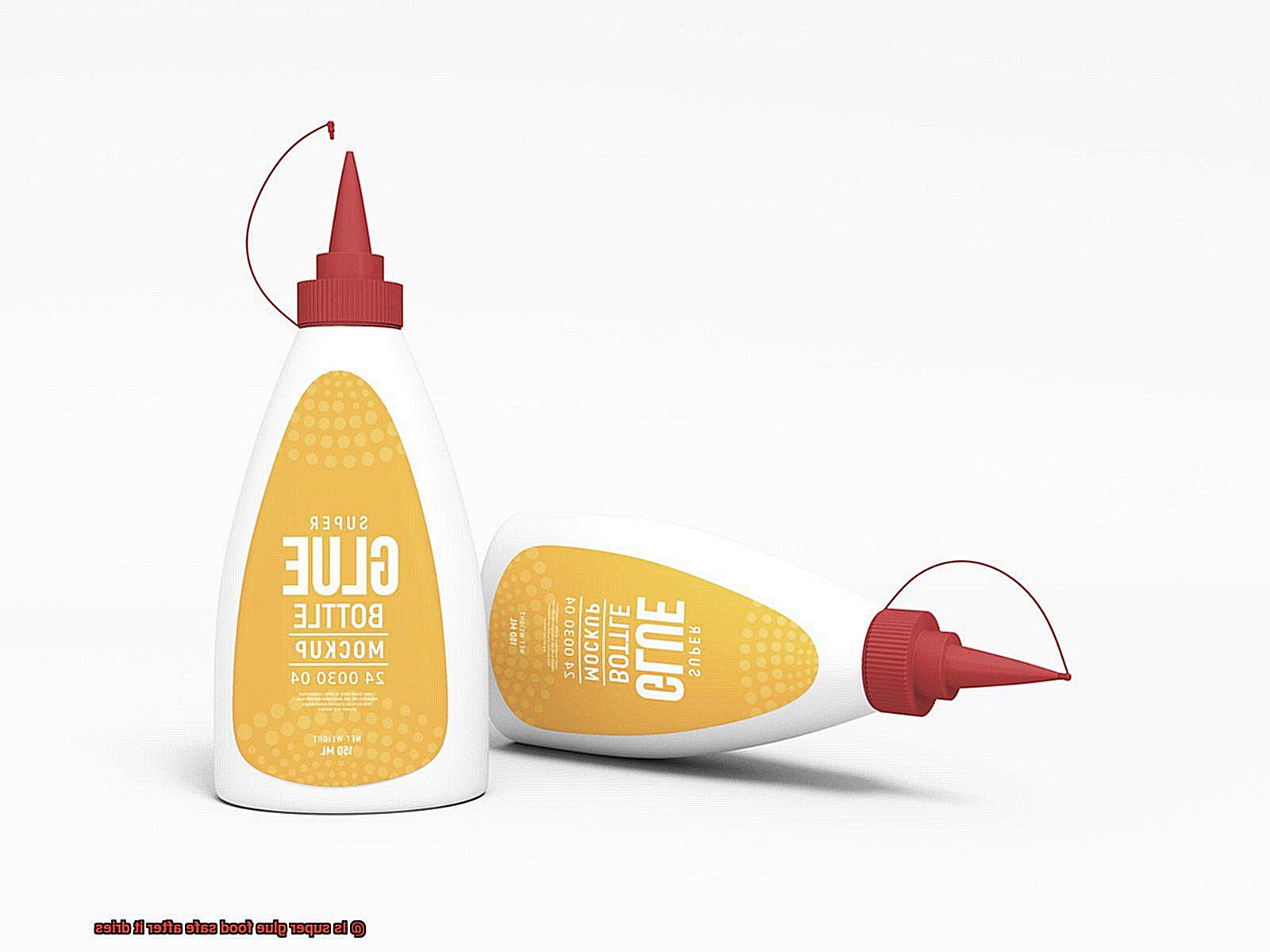
Super glue is known for its strong bonding capabilities, but it can also cause skin irritation or allergic reactions if it comes into direct contact with your skin. To avoid any potential harm, it is essential to wear protective gloves when handling super glue.
Additionally, safety glasses should be worn to protect your eyes from accidental splattering or drips of glue. By taking these precautions, you can safeguard yourself from any potential hazards associated with super glue.
Apply in Small Amounts:
Super glue dries quickly, so apply it in small amounts to avoid excess glue that may spread beyond the intended area. This will help prevent accidental contact with food or other surfaces that shouldn’t come into contact with the adhesive.
When using super glue, it is important to remember that a little goes a long way. The adhesive bonds quickly, so applying it in small amounts can help you maintain control over the application process.

By doing so, you can prevent excess glue from spreading beyond the intended area and potentially coming into contact with surfaces or objects that should not be bonded. This is particularly important when working with delicate materials or items that are sensitive to the adhesive.
Clean Surfaces Thoroughly:
Before applying super glue, ensure that the surfaces you’re bonding are clean and free from dust, grease, or moisture. Use a mild detergent or rubbing alcohol to clean them thoroughly, then let them dry completely before applying the glue. This will ensure a strong bond.
What Happens if Super Glue Comes into Contact with Food or Food-Contact Surfaces?
In the rush of fixing something, accidents can happen, and super glue may accidentally come into contact with food or food-contact surfaces. While it’s not an ideal situation, there are steps you can take to ensure the safety of your food. Let’s delve into what happens when super glue meets food or food-contact surfaces and how to handle this sticky dilemma.
Inspect and Remove Visible Glue:
Carefully examine the affected area and remove any visible traces of the glue. Gently scrape off the dried glue using a plastic utensil or spatula, avoiding sharp objects that could scratch the surface and breed bacteria.
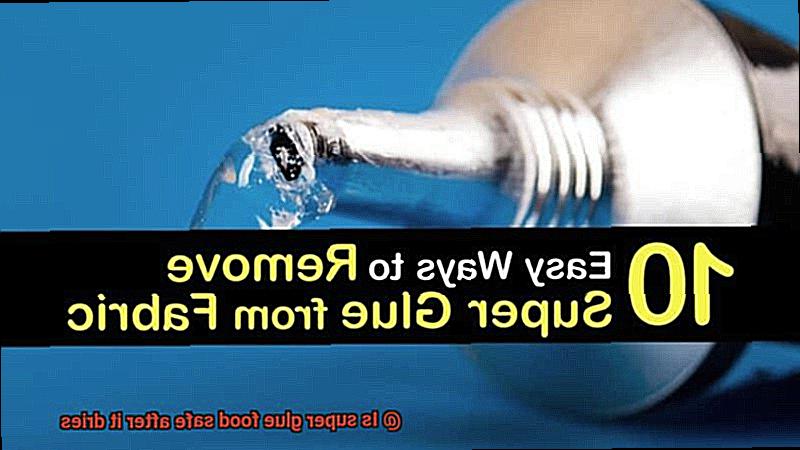
Thoroughly Wash the Area:
After removing the visible glue, wash the area thoroughly with warm soapy water. This will eliminate residue and minimize contamination risks. Cleanliness is crucial in this process.
Porous Surfaces Require Extra Attention:
If the affected surface is porous or has grooves where super glue has seeped in, additional steps are necessary. Use a soft brush or sponge to gently scrub the area with warm water and dish soap. Rinse thoroughly and allow the surface to air dry.
Mind Those Residual Traces:
Even after thorough cleaning, there may still be residual traces of super glue present on the surface. While small amounts are generally considered safe, it’s best to avoid direct contact between food and any remaining glue residue. Use a plate or liner as a barrier between your food and the affected surface.
Consult a Professional if Concerned:
If you have concerns about potential chemical exposure from super glue, it’s wise to consult a healthcare professional or poison control center for guidance. They can provide specific advice based on the type and amount of glue involved.
Prevention is Key:
To avoid these sticky situations altogether, store super glue in a secure location away from the kitchen or food preparation areas. Always read and follow the manufacturer’s instructions and warnings for safe use.
Specialized Adhesives for Use Around Food
In our previous section, we explored the potential dangers of accidental exposure to regular super glue near food. Today, let’s delve deeper into the world of specialized adhesives that are specifically designed to be safe for use around food. Whether you’re a professional chef or a home cook, having the right tools at your disposal is essential, and that includes adhesives that meet the necessary safety standards.
Food-Grade Adhesives:
Food-grade adhesives are a category of adhesives that are formulated to comply with strict regulations set by the FDA and other relevant authorities. These adhesives undergo rigorous testing to ensure they are non-toxic, odorless, and tasteless, making them suitable for direct contact with food. Here are a few types of food-grade adhesives that are commonly used:
Epoxy Resins:
Epoxy resins are highly versatile and widely used in the food industry due to their exceptional resistance to chemicals, moisture, and high temperatures. They are perfect for bonding and sealing applications in food processing equipment and packaging materials. Epoxy resins create a strong and durable bond that ensures both the safety and quality of the food.
Cyanoacrylate Glue:
While traditional super glue is not recommended for direct contact with food, specialized variants known as food-safe super glues are available. These adhesives are formulated to be safe for incidental contact with food, making them ideal for repairing kitchen utensils or sealing small cracks in food storage containers.
Using Specialized Adhesives Safely:
Although specialized adhesives for use around food are designed to be safe, it’s important to exercise caution when handling them. Here are some tips to ensure maximum safety:
Read and Follow Instructions:
Always read and follow the instructions provided by the adhesive manufacturer. Pay attention to any specific guidelines related to food contact.
Store Adhesives Properly:
Keep specialized adhesives stored in a secure location away from your kitchen to prevent accidental exposure. This will help minimize the risk of contamination.
Consult Regulatory Experts:
If you have any doubts or specific regulations apply to your industry or region, consult with a regulatory expert or contact the adhesive manufacturer directly. They can provide guidance and address any concerns you may have.
Precautions to Take When Using Super Glue Near Food
We’ve all been there – a broken plate or a loose handle on a favorite mug, and we reach for the trusty super glue to fix it up.
Before you whip out that tube of super glue near your food, there are a few precautions you should take to ensure the safety and quality of your culinary creations. In this article, we’ll explore some essential tips to keep in mind when using super glue near food.
Clean and sanitize:
Before you even think about grabbing that super glue, make sure you thoroughly clean and sanitize the area where you’ll be working. Wipe down countertops, cutting boards, and any utensils or tools that may come into contact with the food. A clean workspace sets the foundation for safe repairs.
Read and follow instructions:
Different brands and types of super glue may have specific precautions or recommendations for use near food. Take a moment to read and understand the instructions on the packaging before diving into your DIY project. It’s always better to be safe than sorry.
Ventilate:
Working in a well-ventilated area is crucial when using super glue near food. The fumes from the glue can potentially contaminate your culinary delights. Open a window or turn on a fan to minimize your exposure to these fumes and ensure the safety of your food.
Cover or remove food items:
To prevent any accidental contact, cover or remove any food items in the immediate vicinity of where you’ll be using super glue. It’s better to be cautious and avoid any mishaps that could ruin your meal.
Don’t overdo it:
Applying excessive amounts of super glue increases the risk of it spreading or dripping onto nearby surfaces or food. Remember, a little goes a long way. Use just enough to make the repair without going overboard.
No glue in your food:
If, despite your best efforts, some super glue does come into contact with your food, do not consume it. Discard the affected food immediately and don’t take any chances with your health.
Clean up afterwards:
Once you’ve successfully completed your repairs, it’s time to clean up. Thoroughly wash and sanitize all surfaces that may have come into contact with the glue. This includes countertops, cutting boards, utensils, and anything else that may have been exposed. Don’t forget to wash your hands as well to remove any residue that may be present on your skin.
yChMFzqVVLc” >
Conclusion
After much research and consideration, it can be concluded that super glue is not considered food safe after it dries.
Despite its strong adhesive properties, super glue contains chemicals that are not intended to come into contact with food or be ingested. The Food and Drug Administration (FDA) has not approved super glue for use in preparing or serving food, as it can potentially leach harmful substances into the food.
Instead, opt for food-grade adhesives specifically designed for culinary purposes to ensure the safety of yourself and others.

